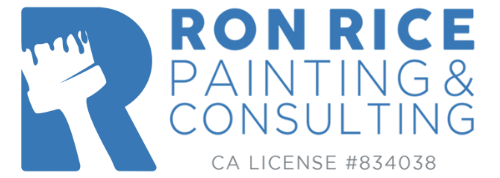Why Should I Paint My Cabinets?
This is the question that has plagued man since, well, the 1990’s when those horrific 70s-style cabinets started going wrong. (Geez that seems so long ago) Anyway, we were still putting mostly stained cabinets in new homes up until 2010 or so. That’s when we really noticed the trend changing to painted cabinets. It doesn’t take much research at all to realize that like everything else in the remodeling world THE MOST BANG FOR YOUR BUCK comes from painting your cabinets. The question should be: Why wouldn’t you paint your cabinets?
Will The Paint Stick?
I am often asked, “Ron, will the paint stick to the old stained wood?”
Yes, it will. With our 9-Step Prep and Paint Cabinet System, we will sand, clean, prime, and then sand again to make sure your new finish is properly applied and durable. In fact, with our 9-Step Prep and Paint Cabinet System, we guarantee your paint will stick.
9-Step Prep and Paint Cabinet System
-
Masking: We begin by covering all the floors and the counters to insure we only paint the cabinets and not your floors and counters.
-
Sanding: When we sand, we do not want to remove the old finish completely; we just want to scratch the finish up really well so the primer adheres properly. During this phase, we will use 150 or 180 grit sand paper.
-
Clean: Next, we clean all doors and boxes. We will go over the cabinets with a cleaner degreaser to look for any oils, kitchen grease, splattered food that might have been missed during the sanding phase.
-
Primer: We will then prime all of your cabinets. There are different methods (spray vs. brush and roll) and primer materials.
*If you are living in the home at the time of the painting, we will more than likely do the boxes by hand (‘by hand’ means to brush and roll). If your home or business is unoccupied, we may spray the boxes.
*We will more than likely take the doors off and either find a place onsite to spray them, or we will take them offsite. However, if your cabinets are an older style, we may leave the doors on and paint them in place. Painting cabinet doors while they are still on the boxes insures that the doors will swing correctly. Some older style hinges are held on by tiny little screws that never go back on properly once they are removed.
*Most of the time we will do boxes by hand but if the situation allows, we will spray them. I could write a complete blog about spraying as opposed to rolling. I’ll save that for another time. However, I will say this: When we decide to do your cabinets by hand, we will make them look as good as if they were sprayed. Our painters are some of the best around.
-
Sand: Once your cabinets are primed, the primer will “raise the grain” of the wood. The surface will be left feeling rough and uneven. This will need to be sanded down. During this phase we will use 220 grit sandpaper.
-
Patching & Caulking: After everything has been masked, cleaned, primed and sanded, we look for any dings or cracks in the wood that we missed. We then fill them with the appropriate filler or caulking and spot sand and spot prime the patched areas. What makes us different: A lot of companies will do this phase of the job on the first half, before the cabinets are primed. The problem with this is that the patching material will adhere WAY BETTER to primer than to raw or stained wood. This is a small step that adds way more quality to your newly painted cabinets.
-
First Coat of Finish Paint: Now that your cabinets are cleaned, prepped, primed and sanded smooth, it’s time for the first coat of finish paint. This will be applied in the same way the primer was in Step 4.
-
Sand: Now we sand the first coat of finish paint one last time. This is a very light sanding to knock off last little bits of debris or burrs in the wood. This a simple and gentle process.
-
Final Coat of Finish Paint: This is when it all comes together–the “icing on the cake,” if you will.
Once the final coat of finish paint is on your new cabinets we will let everything dry. If your doors are offsite we will keep them for a day or two and let them dry solid. Once dry, we return and put everything back together for you.
How Long Before I Use My Kitchen / Bath?
Generally you can start to use your kitchen right away. We suggest you try to keep water off of them for the first four days, as well as avoid heavy use. But overall, the paint will be dry to the touch and you can enjoy your new kitchen or bath right away.
